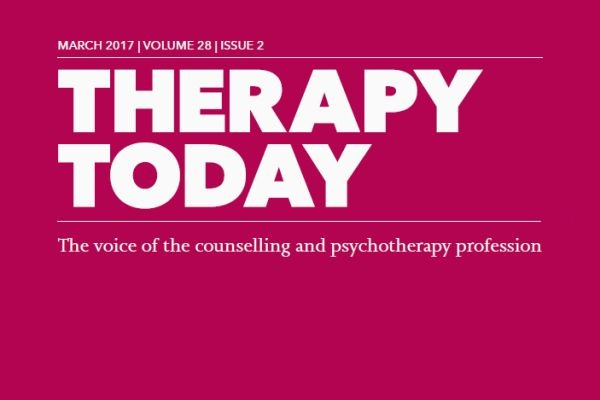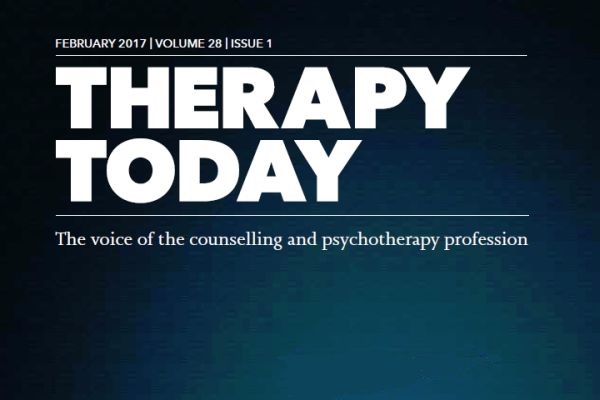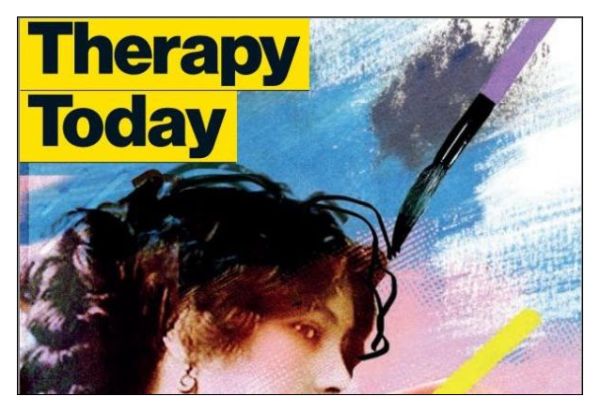Has a client ever asked you to explain the physical cause of their depression – what’s going on inside their brain? It’s not an easy question to answer. In theory, we know more about the architecture of the brain than ever before, thanks to advances in imaging techniques. We can examine ‘live’ human brains, rather than just those of cadavers or mice, and compare depressed and ‘healthy’ brains. We’ve come a long way from hypothesising about depression as a ‘chemical imbalance’. But the neurobiology of depression is highly complex, and it seems that the more we know, the more complex it becomes.
Over the past two decades, studies have linked depression with a multitude of changes in the brain. While mapping the ‘live brain’ is exciting, suggesting the possibility of new treatments and hope for the estimated 300 million people worldwide with depression and other affective disorders, the research can also seem contradictory and baffling. As therapists, how do we make sense of these discoveries in a way that informs our work and helps our clients? Does the research support the premise that talking therapies change the brain as well as the mind?
Brain size
Dr Lianne Schmaal, a psychiatrist and neuroscientist based at the University of Melbourne, co-chairs the ENIGMA MDD consortium,1 a global working group of over 500 scientists researching the association between major depressive disorders and changes in the brain. One of ENIGMA’s recent projects found that the hippocampus, the seahorse-shaped part of the brain’s limbic system that is responsible for forming memories and connecting moods to memories, is significantly smaller in people who have experienced depression than in healthy brains.² Schmaal points out that the difference is slight, but significant: ‘Our finding is robust: the hippocampus was consistently smaller, on average, across a large number of samples encompassing the broad heterogeneity of depression. In addition, a smaller hippocampus has been associated with executive function impairments, learning and memory deficits, and poorer treatment response in depression.’
The findings, which are based on a large sample drawn from several studies, back up results from smaller-scale research indicating that depression changes the brain’s size. One, a study of 24 women, found that the more bouts of depression the women had experienced, the smaller their hippocampus, while their general brain volume remained unchanged.³ Another compared the brains of 16 people with a history of depression with 16 non-depressed subjects and similarly found the hippocampus was 19% smaller in the depressed group.4 It’s been suggested that the shrinking hippocampus may account for the ‘brain fog’ feeling that so many people with depression report, including difficulties recalling words and facts during conversation.5,6 That the hippocampus is affected suggests a stress relationship, says Schmaal: ‘We think that the association between a smaller hippocampus, especially in people with recurrent depression, is a result of prolonged and/or recurrent stress. The hippocampus is especially sensitive to stress because it has a high density of receptors for chemicals that are released during prolonged stress.’ At the moment, they don’t have robust evidence that talking therapies can help counteract this effect, although they have found a possible explanation for why exercise can help people with depression: ‘There are some preliminary indications that selective serotonin re-uptake inhibitors, other medications such as ketamine, and aerobic exercise can increase neurogenesis in the hippocampus,’ she says.
Regulating activity
But it’s not just size that matters – scientists are also interested in how active various sections of the brain are. It’s thought that overactivity in the amygdala, the part of the limbic system that processes emotions, particularly negative emotions, may explain the ‘mental filter’, common in depression, that overemphasises negative events and emotions. Preliminary research suggests that talking therapies can help to regulate this overactivity. Research led in 2014 by Dr Daniel Wiswede at the University of Lubeck’s Department of Neurology found that the overactive amygdala in 18 depressed people returned to normal levels after eight months of psychodynamic therapy.7 Similarly, a 2007 study by neuroscientist Dr Greg Siegle from the University of Pittsburgh found that 14 weeks of CBT both reduced overactivity in the amygdala and increased activity in the prefrontal cortex, the area of the brain responsible for planning and self-control.8 ‘Cognitive therapy teaches you to step in and use your prefrontal cortex rather than letting your emotions run away with you,’ says Siegle.
Overactivity in another part of the limbic system, the anterior cingulate cortex (ACC), has been found in people with social anxiety,9 and in those with depression who experience a punitive inner voice.10 What is reassuring about much of this research is that it confirms what therapists observe in clinical practice, says Dr Susan Mizen, a consultant medical psychotherapist in the NHS and private practice, Chair of Psychotherapy at the Royal College of Psychiatrists and a Jungian analyst. ‘The ACC detects conflict of sensory information, so, if you see something you want and know that you shouldn’t have it, then the ACC will try to resolve the conflict. People who are good at thinking before acting will recruit their frontal lobes to think, “What can I do to try to resolve this problem?” If they can’t find that resolution, the ACC becomes overactive, becoming an internal punishing voice. That’s what the neuroscience tells us, but it’s also what we often observe in clinical practice – working with depression is often about resolving internal conflict,’ she says.
Genetic influence
Studies also suggest a genetic influence on susceptibility to depression. In 2003, a now famous study by Dr Avshalom Caspi and colleagues found that people who have a variation of the serotonin transporter gene (5-HTTLPR), known as a ‘short allele’, are at much higher risk of depression than those who have a ‘long allele’.11,12 This doesn’t mean, however, that those with a short allele are doomed to depression. ‘On the face of it, that looks like a biological view for depression until you understand what the short and long alleles actually code for,’ says Mizen, ‘which is the ability of the cognitive bit of the brain, the frontal lobes, to largely suppress things that are emotionally painful. It seems that people with the long allele are better at ignoring painful feelings than people who have the short allele.’
Where once it was assumed that everything about us is inscribed indelibly in the genes, it’s now known that there is a significant epigenetic interaction between genes and environment. It could be argued that, by helping people manage their higher sensitivity to emotional pain, counselling can have an epigenetic effect.
Connectivity
Neuroscientists are also investigating the role of connectivity between different areas of the brain – particularly the areas associated with mood, thought and concentration. An imbalance in connectivity could explain the perpetual sense of loss and disappointment in depressed people, according to research from the University of Warwick and Fudan University, China.13 The brains of depressed subjects showed enhanced neural connectivity between the lateral orbitofrontal cortex, the ‘non-reward’ area of the brain, which is activated when we experience disappointment or punishment, and the area of the brain associated with our sense of self. At the same time, there was reduced connectivity between the medial orbitofrontal cortex, the ‘reward’ centre, and the brain’s memory systems.
Researchers think that this ‘double whammy’ may explain why some people with depression feel overwhelmed by minor disappointments and have trouble recalling happy memories.
‘When two areas of the brain are active at the same time, the physical connections strengthen between them,’ says clinical psychologist Dr Liam Mason. ‘It is important to bear in mind that physical connections already exist between different brain regions, but they are strengthened or weakened depending on how much these brain regions talk to one another.’ Dr Mason’s research,14 conducted at King’s College London and published in January this year, is the first to show that increases in connectivity between a number of brain regions occur after treatment with CBT – most importantly, between the amygdala (the threat centre) and the frontal lobes (involved in thinking and reasoning).
Connectivity is the key to understanding depression, says Allan Schore, Associate Clinical Professor in the Department of Psychiatry and Biobehavioral Sciences, University of California at Los Angeles, and author of the acclaimed text The Science and the Art of Psychotherapy15 – but with a crucial caveat: it’s specifically connectivity in the right hemisphere of the brain that matters.16 ‘The right hemisphere is really the core of the problem,’ he says. ‘It’s selectively involved in processing negative emotions in depression, pessimistic thoughts and feelings, and outlook on life, as well as sensitivity to pain. And, if you have a connectivity that is poor between the hierarchical apex of the limbic system into the amygdala, there is a poor ability by the “higher” aspects of the right brain to regulate the lower aspects of the right brain.’
For Schore, the key to accessing the right brain is therapy that works at a deep, relational level. ‘For me, there are two forms of psychotherapy,’ he says. ‘There is symptom-reducing, short-term psychotherapy, which is essentially directed towards the left brain. Then there is a second form of longer-term psychotherapy, which is growth-promoting and works with the right brain.’
Cause or effect?
As therapists, we have long known that there is no ‘typical’ experience of depression and no one-size-fits-all treatment for it, and the complexity of the findings from neuroscience appears to back this up. Our perceptions of and relationship with the world around us are a dynamic process, influenced and accompanied by complex interactions in the brain, so it makes sense that there are multiple possible causes of depressive symptoms. Nor do we have any clear-cut answer to the chicken and egg question – are the brain changes seen in depressed people the cause or a consequence of their depression? New studies are suggesting that some changes may even be compensatory – the brain seeking to protect itself against the damaging effects of depression.17
‘What I feel is most useful is that neuroscience has shown us that the old division between biological, social and psychological models of mental illness is permeable,’ says Susan Mizen. ‘We don’t need to think about them in this divisive way; they are all joined up and inter-related. Similarly, different sorts of therapy work on different parts of the brain. Cognitive therapy, for example, promotes the cognitive part of the brain, the frontal lobes, to find a way to negotiate its way out of the depression, particularly if it’s an anxiety problem rather than a separation problem. If it’s a separation problem, reflective therapies are more likely to be helpful as they act on the part of the brain that deals with attachment. The more behavioural therapies work on down-regulating the amygdala response, which is to do with fear. To me, it seems these different approaches are not in competition; they are all doing different jobs.’
While it’s clear that there is still much to learn, there is a wealth of research underway that has the potential to widen our knowledge base. The ENIGMA MDD consortium, for example, is working on several projects, including the influence that childhood maltreatment has on brain structure and function, the association between brain changes and suicidal thoughts, how sleep influences brain alterations in people with depression, and how depression relates to changes in the brain at different life stages. ‘For inferences about causes and consequences, we need to follow healthy people, perhaps those at risk of depression, for a long time in order to identify which brain changes are already present before the onset of depression, which could indicate a cause or a risk factor, and which brain changes occur after the start of a depression,’ says Lianne Schmaal.
What’s perhaps most pertinent for therapists is the confirmation that neuroscience gives us of the brain’s plasticity and that neurogenesis continues throughout life. We now know that the architecture of a depressed brain can change, and there is emerging evidence that talking therapies help that change come about.
‘What is discussed and practised in therapy uses physical brain connections that already exist, but makes them stronger. It probably also weakens other connections associated with older or less helpful ways of thinking,’ says Liam Mason. ‘The new ways of thinking are likely to be further strengthened by applying the thinking to situations encountered between therapy sessions, as well as after therapy has ended. In the not-so-distant future, it will be possible for us to test this by looking at brain connectivity during a therapy session in real-time.’
Until then, we need to keep faith that what we do in the therapy room does make a difference.
Sally Brown is a counsellor and coach in private practice (therapythatworks.co.uk), a freelance journalist, and Executive Specialist for Communication for BACP Coaching.
More from Therapy Today

Is counselling women's work?
Free article: Female counsellors outnumber male by more than five to one. Sally Brown wonders why. Therapy Today, March 2017

Through the gate
Free article: Catherine Jackson visits HMP Styal, where a pioneering counselling service has developed new ways of working with offenders on short-term sentences. Therapy Today, February 2017

Can counselling help people in poverty?
Open article: Catherine Jackson asks how counselling can help people living in poverty and financial stress. Therapy Today, December 2016
References
1. http://enigma.ini.usc.edu
2. Schmaal L et al. Subcortical brain alterations in major depressive disorder: findings from the ENIGMA Major Depressive Disorder working group. Molecular Psychiatry 2016; 21: 806–812.
3. Sheline YI et al. Depression duration but not age predicts hippocampal volume loss in medically healthy women with recurrent major depression. Journal of Neuroscience 1999; 19(12): 5034–5043.
4. Bremner JD et al. Hippocampal volume reduction in major depression. American Journal of Psychiatry 2000;157(1): 115–118.
5. Sass KJ et al. Verbal memory impairment correlates with hippocampal pyramidal cell density. Neurology 1990; 40: 1694–1697.
6. Shelton DJ, Kirwan CB. A possible negative influence of depression on the ability to overcome memory interference. Behavioural Brain Research 2013; 256: 20–26.
7. Wiswede D et al. Tracking functional brain changes in patients with depression under psychodynamic psychotherapy using individualized stimuli. PLoS ONE 9(10): e109037. doi:10.1371/journal.pone.0109037
8. DeRubeis RJ, Siegle GJ, Hollon SD. Cognitive therapy vs. medications for depression: treatment outcomes and neural mechanisms. Nature Reviews Neuroscience 2008; 9(10): 788–796.
9. Lavin C et al. The anterior cingulate cortex: an integrative hub for human socially-driven interactions. Frontiers in Neuroscience 2013; 7: 64.
10. Shackman AJ et al. The integration of negative affect, pain and cognitive control in the cingulate cortex. Nature Reviews Neuroscience 2011; 12: 154–167.
11. Caspi A et al. Influence of life stress on depression: moderation by a polymorphism in the 5-HTT gene. Science 2003; 301: 386–389.
12. Heils A et al. Functional promoter and polyadenylation site mapping of the human serotonin (5-HT) transporter gene. Journal of Neural Transmission 1995; 102(3): 247–244.
13. Wei Cheng et al. Medial reward and lateral non-reward orbitofrontal cortex circuits change in opposite directions in depression. Brain 2016; 139(12): 3296–3309.
14. Mason L et al. Brain connectivity changes occurring following cognitive behavioural therapy for psychosis predict long-term recovery. Translational Psychiatry 2017; 7: e1001. doi:10.1038/tp.2016.263
15. Shore AN. The science and art of psychotherapy. New York: WW Norton & Co; 2011.
16. Schore AN. The right brain is dominant in psychotherapy. Psychotherapy 2014; 51(3): 388–397.
17. Bansal R, Hellerstein DJ, Peterson BS. Evidence for neuroplastic compensation in the cerebral cortex of persons with depressive illness. Molecular Psychiatry 2017: doi: 10.1038/mp.2017.34
